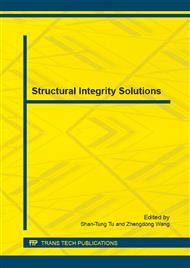p.133
p.139
p.145
p.153
p.160
p.166
p.172
p.178
p.186
Influence of Heat Treatments on the Microstructure and Mechanical Properties in Ti-10V-2Fe-3Al Alloy
Abstract:
This paper reports the results of an ongoing research which was set up to investigate the effect of microstructures on the activity of different deformation mechanisms and the resulting mechanical behavior of the Ti-10V-2Fe-3Al alloy. Various microstructures were established by different heat treatments. Depending on the microstructures, obvious differences in the mechanical properties of this alloy were obtained. It is shown that in α+β phase field solution treatment conditions, with the increase of heating time, the fraction of globular α phase decreases, the compression strength increases. In β+(α+β) phase field solution treatment conditions, with the increase of heating time, alloys have opposite trends. In aging conditions, the microstructure and mechanical property do not change apparently with the aging time. The microstructure of the α phase and β phase has a great influence on the fractographic morphology.
Info:
Periodical:
Pages:
160-165
Citation:
Online since:
April 2015
Authors:
Keywords:
Price:
Сopyright:
© 2015 Trans Tech Publications Ltd. All Rights Reserved
Share:
Citation:


